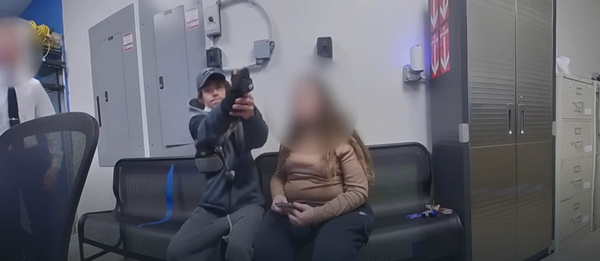
I’ve been impressed with the growing range of Viltrox Air lenses for both APS-C format and full-frame cameras. The former includes the Viltrox AF 15mm f/1.7 Air, Viltrox AF 25mm f/1.7 Air, Viltrox AF 35mm f/1.7 Air and Viltrox AF 56mm f/1.7 Air. Full-frame contenders include the Viltrox AF 20mm f/2.8 Air, Viltrox AF 40mm f/2.5 Air and Viltrox AF 50mm f/2 Air. I’m also keen that, especially in the APS-C camp, the lenses have such a unified design, all sharing the same aperture rating and handling characteristics, and all being virtually the same size and weight.
The newest pair of Air lenses are ultra-wide-angle primes for APS-C and full-frame cameras respectively, this APS-C format AF 9mm f/2.8 Air again being a very similar size and weight to others in the range but having a narrower aperture to enable the same level of compact and lightweight build. And let’s face it, f/2.8 is pretty fast for such an ultra-wide-angle lens.
As such, it aims to be one of the best wide-angle lenses, as well as one of the best purchase options for APS-C format Fujifilm X, Nikon Z and Sony E mount cameras. And the other lens in the pair, in case you’re wondering, is the Viltrox AF 14mm f/4 FE Air, which is designed to give a very similar viewing angle on full-frame Nikon Z and Sony E mount mirrorless cameras.

Viltrox AF 9mm f/2.8 Air: Specifications
Mount options |
Fujifilm X, Nikon Z, Sony E |
Lens construction |
13 elements in 11 groups |
Angle of view |
113.8 degrees |
Diaphragm blades |
7 |
Minimum aperture |
f/16 |
Minimum focus distance |
0.13m |
Maximum magnification |
0.15x |
Filter size |
58mm |
Dimensions |
65x57mm / 2.6x2.2" |
Weight |
175g / 6.2oz |
Viltrox AF 9mm f/2.8 Air: Price
APS-C format Viltrox Air lenses tend to cost around $168 / £165 to $237 / £229, so they’re typically very affordable for fairly fast prime lenses. The Viltrox AF 9mm f/2.8 Air that I’m reviewing here costs $199 / £190, so it’s a little pricier than some. Even so, given the extremely wide viewing angle delivered by this lens, I reckon it’s potentially great value for money.
Viltrox AF 9mm f/2.8 Air: Design & Handling
I’ll admit it, sometimes I’m a bit greedy. I see a fabulous sweeping landscape vista, an incredible cityscape or an epic architectural interior and I just want to cram as much of it into my camera as possible. Sometimes a standard zoom lens will suffice, especially one with a generous maximum viewing angle like the Fujifilm XF 16-50mm f/2.8-4.8 R LM WR, Nikon Z DX 16-50mm f/3.5-6.3 VR or the Sony E 16-55mm f/2.8 G. But sometimes it won’t, and I really want to pack a whole lot more into the image frame.
The flipside is that if I’m negotiating treacherous terrain for landscape photography, putting in some serious mileage along city streets for urban shots, or exploring architectural sites, I don’t want to be weighed down by a load of extra kit. I feel that the Viltrox AF 9mm f/2.8 Air is somewhat unusual in delivering an ultra-wide viewing angle in a package that’s incredibly compact and lightweight, especially considering its relatively fast f/2.8 aperture. Indeed, at only 65x57mm / 2.6x2.2" and 175g / 6.2oz, it’s easy to take pretty much anywhere and everywhere.

Considering its bargain basement price tag, you’d be forgiven for thinking that this and other Viltrox Air lenses skimp on quality glass. As it turns out, the optical design features no less than 13 elements arranged in 11 groups. These include two aspherical elements, three ED (Extra-low Dispersion) elements and three HR (High Refractive index) elements. That’s pretty good going, with the aim of maximizing sharpness, clarity and contrast while minimizing color fringing and other unwanted aberrations.

As I’ve come to expect from Viltrox Air lenses, autofocus is quick and snappy for stills, as well as offering smooth and virtually silent transitions when shooting video. That’s thanks to the leadscrew stepping motor that drives focusing. It also enables smooth and very precise manual focusing adjustments, thanks to a comfortably large and textured electronically coupled control ring. Sadly, there’s no AF/MF focusing mode switch but that’s in keeping with the compact, minimalist design of the lens. The same goes for the absence of an aperture control ring, which is typically featured on more up-market and up-scaled Viltrox lenses.

Here's something else of which I’m very much in favor. Unlike many ultra-wide-angle lenses, the Viltrox has a removable hood and a regular filter thread with a modest 58mm size. This makes it dead easy to attach filters like ND Grads (Neutral Density Graduated), high-density ND filters for long exposures, and Variable ND filters, any and all of which can give a massive boost to creativity in landscape photography.

The hood itself is of the usual bayonet-fit design and can be reversed and placed back on the lens for compact stowage. When in use, its petal-shaped profile maximizes efficiency, and the lens is also supplied with a pinch-action front cap, making it easy to attach and remove when the hood is in its forward-facing business mode orientation.

Moving from front to back, the lens has a metal rather than plastic mounting plate, again typical of Viltrox Air lenses, and unlike budget-priced own-brand lenses from some camera manufacturers. One thing that’s lacking is that there are no weather-seals, including the omission of a rubber gasket on the mounting plate, but it does include gold-plated electronic contacts and a USB-C port for applying firmware updates, should they become necessary.

Viltrox AF 9mm f/2.8 Air: Performance
I’ve often found that sharpness is a moveable feast with ultra-wide-angle lenses. It can be very good in the central region of the frame but comparatively lacking out towards the edges and corners. I’m impressed that the Viltrox maintains very pleasing sharpness right out to the extremities of the image frame, which can be a real performance boost for landscapes, cityscapes and architectural photography.

For creative effect, I sometimes like to shoot subjects from really close in with an ultra-wide-angle lens, to exaggerate the perspective between foreground and background areas. Again, the Viltrox obliges with a really short minimum focus distance of just 0.13m or about 5 inches, as measured from the image sensor in the camera body. Suffice it to say that you can definitely get up close and personal to your subject matter.

The ultra-wide perspective and short minimum focus distance also makes this lens a great choice for vlogging and taking selfies, where you want to hold the camera at arm’s length and put yourself in the scene, capturing a large portion of the backdrop.
As for other performance factors, the lens does well to control distortion, relying much less heavily on automatic in-camera correction than many other wide-angle lenses that are designed for mirrorless cameras. The same goes for minimizing color fringing, not only in the central region of the image frame but right out to the corners.

Viltrox AF 9mm f/2.8 Air: Sample Images
The sample images in this gallery were taken at Wells Cathedral and on a sunny morning in Collet Park, a recreational area in the small town of Shepton Mallet, both locations being in the county of Somerset, South West England. The interior shots of the cathedral were all taken at the widest aperture of f/2.8, giving the lens a tough test for edge-to-edge sharpness.


















Viltrox AF 9mm f/2.8 Air: Lab Results
We run a range of lab tests under controlled conditions, using the Imatest Master testing suite. Photos of test charts are taken across the range of apertures and zooms (where available), then analyzed for sharpness, distortion and chromatic aberrations.
We use Imatest SFR (spatial frequency response) charts and analysis software to plot lens resolution at the center of the image frame, corners and mid-point distances, across the range of aperture settings and, with zoom lenses, at four different focal lengths. The tests also measure distortion and color fringing (chromatic aberration).
Sharpness:

Center-sharpness is excellent even when shooting wide-open at f/2.8. It drops off gradually as you stop down through the aperture range but this only tends to be noticeable in real-world shooting at the narrowest apertures between f/11 and f/16. Sharpness also holds up very well right out at the extreme edges and corners of the frame. Lab results aren’t flattering for this, due to the extremely close proximity of test charts when testing ultra-wide-angle lenses.
Fringing:

Color fringing is very minimal out at the edges and corners of the frame and completely negligible across most of it. And that’s with automatic in-camera correction disabled.
Distortion: -0.55
Many wide-angle lenses designed for mirrorless cameras nowadays rely massively on automatic in-camera correction, without which images look more like they’ve been shot with a fisheye lens. It’s refreshing to see such minimal barrel distortion from a ‘mirrorless’ wide-angle lens when in-camera correction is disabled.
Viltrox AF 9mm f/2.8 Air: Verdict
Money no object, I’d buy lenses to add to my collection just for the sake of it. But most of us nowadays have to be careful with our spending and need a very good reason to buy an additional lens. I feel that the Viltrox AF 9mm f/2.8 Air is almost a no-brainer. It gives a genuine advantage in delivering much greater wide-angle potential than the standard zoom that most of use for most of the time, really taking the blinkers off our photography for landscapes, cityscapes, architecture, astrophotography, and even for selfies and vlogging. And it does so in a really compact and lightweight package that’s easy to take along for the ride. Last but not least, it performs very well indeed and is remarkably inexpensive to buy, making it standout value for money. Just how many reasons do you need?
|
Features ★★★★☆ |
The optical layout includes specialist elements, autofocus features a leadscrew stepping motor, there’s a removable hood and a 58mm filter thread. |
|
Design ★★★★☆ |
The emphasis is on convenience and simplicity, so the lens is compact and lightweight but lacks an AF/MF switch or an aperture control ring. |
|
Performance ★★★★☆ |
Image quality is very pleasing, with impressive sharpness right out to the edges and corners of the image frame. |
|
Value ★★★★★ |
For an ultra-wide-angle prime lens with a fairly fast f/2.8 aperture rating, it’s incredible value for money. |








